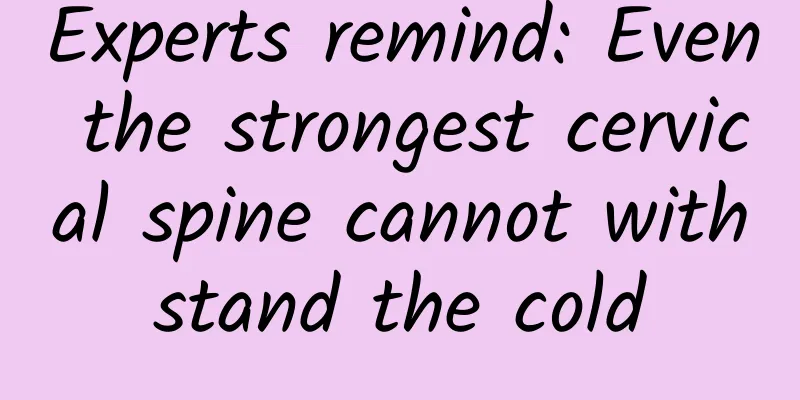Polycystic ovary can be cured

|
Polycystic ovary is the main cause of female infertility. When women feel unbearable abdominal pain during menstruation, it is likely that they have polycystic ovary disease, which must be actively treated. Polycystic ovary is also related to the degree of obesity. Most patients with polycystic ovary are obese. Exercise and weight loss can also help with treatment. So can polycystic ovary be completely cured? The main purpose of PCOS treatment is to establish a normal menstrual cycle with ovulation, restore fertility, and eliminate hirsutism. Based on the symptoms of polycystic ovary disease, it can be inferred that if patients want to succeed, they should first ovulate normally and establish a normal menstrual cycle. At this time, if the ovaries no longer produce too much androgen, the hirsutism will disappear. Treatments for polycystic ovary disease include: 1. Obesity and insulin resistance Increase exercise to lose weight, correct endocrine and metabolic disorders aggravated by obesity, reduce insulin resistance and hyperinsulinemia, reduce IGF-1, increase IGfBP-1, and at the same time increase SHBG to reduce free androgen levels. Losing weight can restore ovulation in some obese women with PCOS and prevent the occurrence of type 2 diabetes and cardiovascular disease. Metformin treatment can be used for patients with or without diabetes. It can effectively reduce body weight, improve insulin sensitivity, lower insulin levels, reduce hair loss and even restore menstruation (25%) and ovulation. Since obesity and insulin resistance are the main causes of PCOS, any drug that can reduce weight and increase insulin sensitivity can treat this syndrome. 2. Drug-induced ovulation (1) Clomiphene is the drug of choice for PCOS, with an ovulation rate of 60% to 80% and a pregnancy rate of 30% to 50%. Clomiphene competes with endogenous estrogen receptors at the hypothalamus-pituitary level, inhibits estrogen negative feedback, increases the pulse frequency of GnRH secretion, and thus adjusts the secretion ratio of LH and FSH. Clomiphene also directly stimulates the ovaries to synthesize and secrete estrogen. After taking this drug, the ovaries may enlarge due to overstimulation (13.6%), vasodilation may cause hot flashes (10.4%), abdominal discomfort (5.5%), blurred vision (1.5%), or side effects such as rash and mild hair loss may occur. During treatment, it is necessary to record the basal body temperature of the menstrual cycle, monitor ovulation, or measure serum progesterone and estradiol to confirm whether ovulation occurs and guide the adjustment of the dosage for the next treatment course. If there is still no ovulation or conception after 6 to 12 months of clomiphene treatment, clomiphene plus HCG or glucocorticoids, bromocriptine or HMG, FSH, GnRH, etc. can be given. (2) Combination of clomiphene and human chorionic gonadotropin (HCG): HCG should be added on the 7th day after discontinuation of clomiphene. (3) The effect of glucocorticoids combined with clomiphene is based on its ability to inhibit excessive androgen secretion from the ovaries or adrenal glands. Dexamethasone or prednisone is usually used. The effective rate within 2 months is 35.7%, and the ovarian function of patients with amenorrhea and anovulation is restored to a certain extent. When clomiphene is ineffective in inducing ovulation, dexamethasone can be added during the treatment cycle. (4) Human gonadotropin (HMG) is mainly used for patients with decreased endogenous pituitary gonadotropin and estrogen secretion. Human gonadotropin (HMG) is an extract purified from the urine of menopausal women. It contains FSH and LH in a ratio of 1:1. Each ampoule contains 75 U of FSH and LH respectively. Human gonadotropin (HMG) is considered as an alternative ovulation-inducing drug for the treatment of anovulatory infertility, but it has many side effects and a greater risk of inducing ovarian hyperstimulation syndrome (OHSS). The therapeutic dose of human chorionic gonadotropin (HCG) should vary according to the individual and treatment cycle, and strict follicle maturation monitoring measures should be in place to prevent the occurrence of ovarian hyperstimulation syndrome (OHSS). (5) Gonadotropin-releasing hormone (GnRH) GnRH can promote the release of FSH and LH from the pituitary gland, but long-term use makes the GnRH receptors of pituitary cells insensitive, leading to a decrease in gonadotropin, thereby reducing the synthesis of ovarian sex hormones. Its effect is reversible. It initially stimulates the pituitary FSH, LH and ovarian sex hormones, which then drop to normal levels after 14 days and reach castration levels after 28 days. However, due to the high cost and large dosage of GnRH-A, its clinical application is limited. |
<<: Gynecological Bartholin's gland cyst
>>: Polycystic ovary pregnancy
Recommend
Why does the car make a noise when it is shifting gears? Why does the car make a noise when it is shifting gears?
Engaging gears is also commonly known as shifting...
What causes breast enlargement and pain?
In daily life, female friends are all concerned a...
Is pubic hair removal good? You can only know after you have seen it.
Many people believe that pubic hair can bring a l...
Why do women always feel damp on the soles of their feet?
Many women experience this situation, that is, th...
Treatment for vaginal odor
Although the odor at the vaginal opening will not...
How big is the follicle? Polycystic ovary
Polycystic ovaries are a common condition in wome...
What is the best fertilizer for Clivia? What is the function of Clivia?
The flower language of Clivia is "noble"...
Non-surgical treatment of uterine fibroids
What are the non-surgical treatments for uterine ...
Does abdominal distension after embryo transplant mean conception failure?
Embryo transplantation is currently the fastest w...
Can I get pregnant if I have sex a week after my period?
Leftover women are becoming more and more common ...
Will delayed menstruation affect ovulation?
Some women may have this question: will delayed m...
Arm contraceptive implant
Unexpected pregnancy and abortion can cause great...
Causes of memory loss after childbirth
I believe everyone knows the importance of having...
What are the cyclical changes of the endometrium?
For women who want to get pregnant, they should n...









